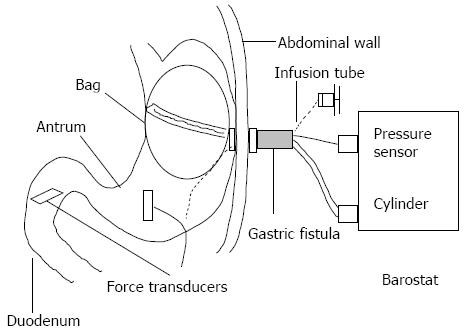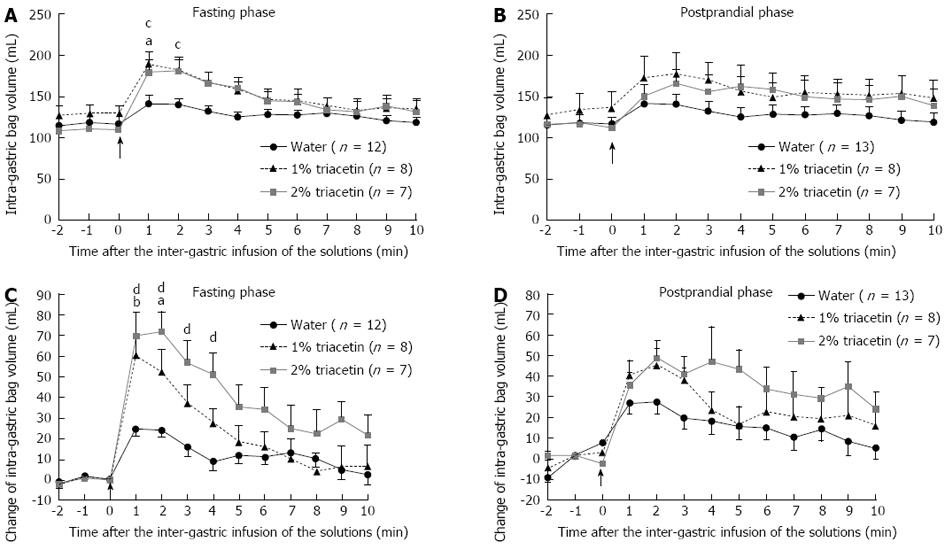Copyright
©2014 Baishideng Publishing Group Co.
World J Gastroenterol. Jan 28, 2014; 20(4): 1054-1060
Published online Jan 28, 2014. doi: 10.3748/wjg.v20.i4.1054
Published online Jan 28, 2014. doi: 10.3748/wjg.v20.i4.1054
Figure 1 Schematic representation of canine experimental model.
Figure 2 Effect of triacetin on the proximal gastric tone in fasting and postprandial phases.
The receptive volume (representative of gastric tone) before and after infusion in fasted (A, C) and fed (B, D) animals is presented. Data are expressed as mean ± SE (A, B) aP < 0.05 for 1% triacetin, cP < 0.05 for 2% triacetin vs before infusion. (C, D) aP < 0.05, bP < 0.01 for 1% triacetin vs water; cP < 0.05, dP < 0.01 for 2% triacetin vs water. The point of infusion is indicated by an arrow.
Figure 3 Effects of triacetin on gastric antral contractions in fasting and postprandial phases.
The antral contractions recorded at every 1 min after infusion in (A) fasted and (B) fed animals are presented as the relative magnitudes of change from the average values at 3 min before infusion. Data are expressed as mean ± SE aP < 0.05 for 1% triacetin vs water, cP < 0.05 for 2% triacetin vs water.
Figure 4 Effects of triacetin on duodenal contractions in fasting and postprandial phases.
The duodenal contractions recorded at every 1 min after infusion in (A) fasted and (B) fed animals are presented as the relative magnitudes of change from the average values at 3 min before infusion. Data are expressed as mean ± SE aP < 0.05 for 2% triacetin vs water.
- Citation: Oosaka K, Tokuda M, Furukawa N. Intra-gastric triacetin alters upper gastrointestinal motility in conscious dogs. World J Gastroenterol 2014; 20(4): 1054-1060
- URL: https://www.wjgnet.com/1007-9327/full/v20/i4/1054.htm
- DOI: https://dx.doi.org/10.3748/wjg.v20.i4.1054












